#head lopper
Text
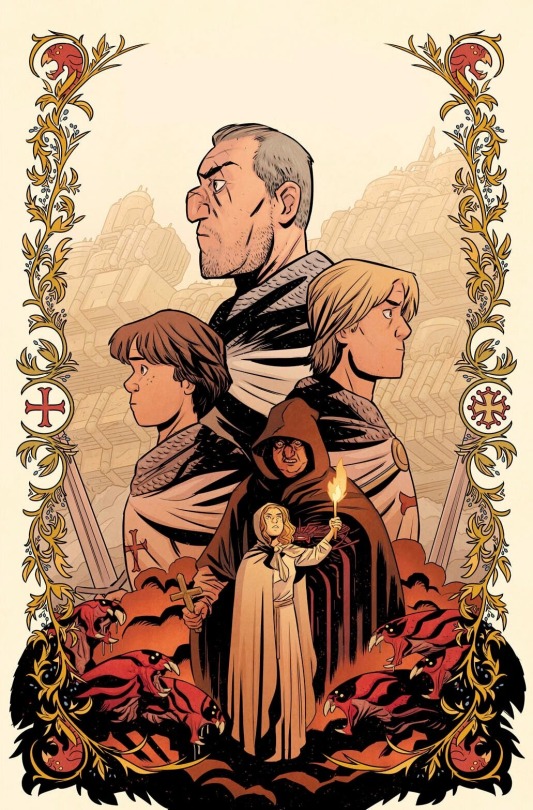
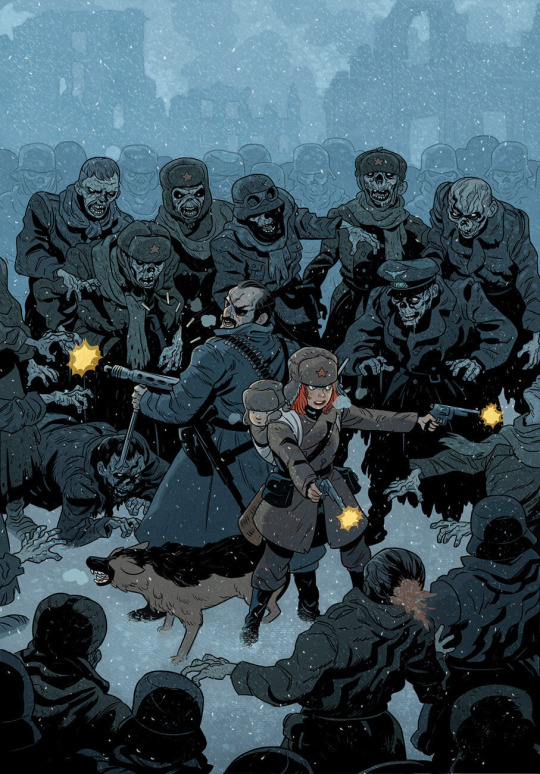


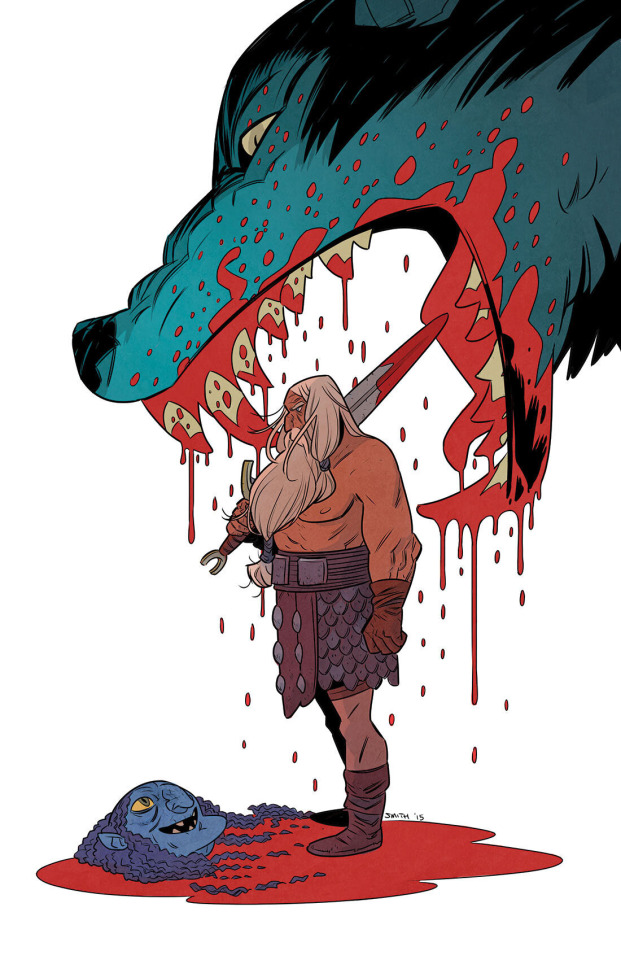


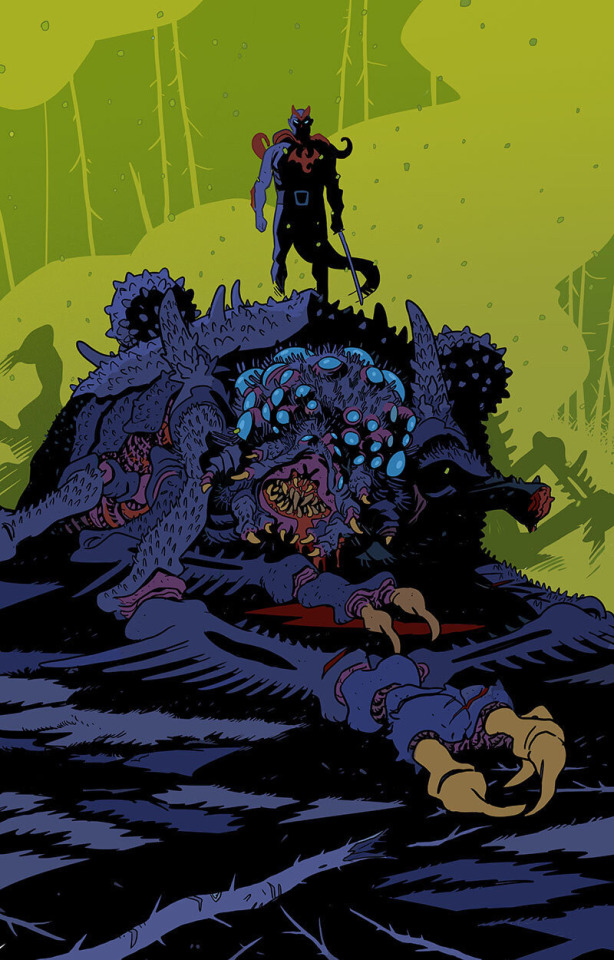
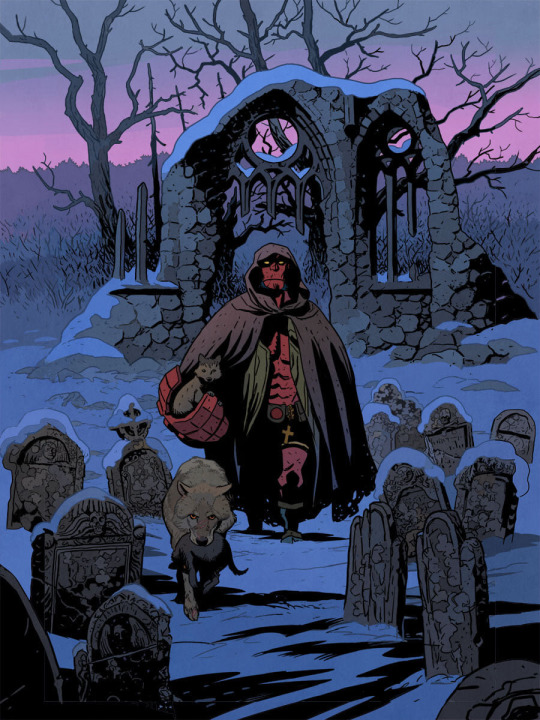

Artist Showcase: Matt Smith
#matt smith#hellboy#young hellboy#folklords#buffy the vampire slayer#head lopper#andrew maclean#artist showcase#boom! studios#dark horse comics#mike mignola#mignolaverse#b.p.r.d.#lake of fire
93 notes
·
View notes
Text

Head Lopper by Mike Mignola
41 notes
·
View notes
Text

Map of the island of Barra from the comic Head Looper by Andrew MacLean.
7 notes
·
View notes
Text

Head Lopper by Andrew Maclean
#andrew maclean#head lopper#norgal#agatha blue witch#image comics#blood tw#tw blood#blood cw#cw blood#injury tw#tw injury#injury cw#cw injury#beheading tw#tw beheading#beheading cw#cw beheading#dismemberment tw#tw dismemberment#dismemberment cw#cw dismemberment#gore tw#tw gore#gore cw#cw gore
20 notes
·
View notes
Text

Headlopper cover designed for Andrew MacLean’s contest from back in 2018!
4 notes
·
View notes
Text
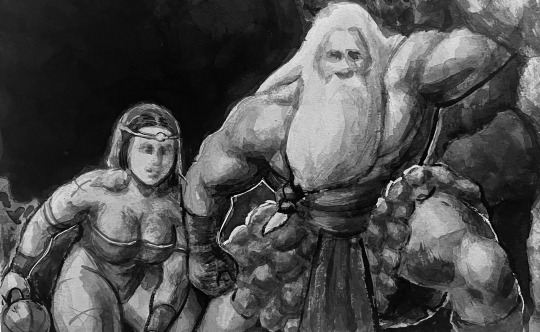



Head lopper & Barbarian
Inspired by Andrew MacLean and MG Houston art on IG
#drawing#illustration#concept art#art#sketch#artists on tumblr#ink drawing#artwork#character design#girl#warriror#adventure#explore#head lopper#cave#female warrior#ink#barbarian#exploration#artist#fine art#illustrator#fan art#original art#atmosphere#comic
4 notes
·
View notes
Photo

Head Lopper fanart
3 notes
·
View notes
Photo


Fell in love with Rumble yesterday so I made some fan art!
James Harren’s art style is incredible.
Can't wait until I get to the Head Lopper crossover!
#comics#image comics#rumble#head lopper#vikings#ink#cover art#Movie Poster#comic book art#sketch#fan art#james harren#andrew maclean#Illustration
7 notes
·
View notes
Text

HEAD LOPPER: Bootleg
Jason Lego
1 note
·
View note
Photo

LOPPIN’ HEADS with Andrew MacLean
While I've been having a little holiday, my buddy Eric Anthony (the other half of the Omniverse Comics Guide) landed an interview with the incredible Andrew MacLean - creator of ApocalyptiGirl, the acclaimed Head Lopper and the Laser Wolf Attack line of merch!
Andrews shares how he fell in love with comics, gives advice for creators and tells us who he'd like to see Norgal team up witht! Could he take Conan or Murder Falcon in a fight?
PLAY: Loppin’ Heads
1 note
·
View note
Text
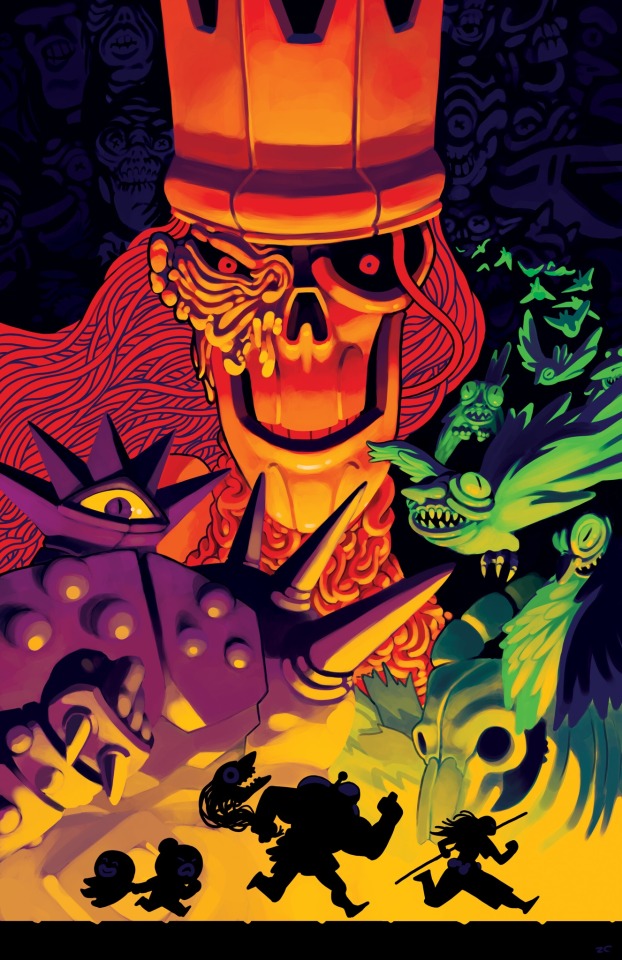
Head Lopper #11 (Pin-up art by Zachary Cunningham)
#head lopper#zachary cunningham#Norgal#Agatha the blue witch#Brishka#ulrich the twice damned#image comics#textless cover art
8 notes
·
View notes
Text
Four also "has an item for that" except it's for home repair and metal workshop.
#linked universe#need to grab something hot? Four's got tongs#a crowbar? got it#pliers? you bet#wire cutters and loppers#fifty different heads for screwdrivers#hammers for nails - hammers for flattening - hammers for bashing monsters#a whetstone - metal polish#steel wool and every different possible grit sandpaper#rays random ramblings#not only that but he's got x4 of each
29 notes
·
View notes
Text
Alright, let’s start with discourse, shall we?
Gatekeeping Combat
Three days ago, the Gorgon Bones blog made this post about fighters in TTRPGs (particularly the OSR): https://gorgonbones.blogspot.com/2024/02/choosing-fighter-means-choosing-violence.html?m=1
I recommend reading the post, it’s fun (and the comments are hilarious). But, for those who don’t have the time or attention span (trust me, I’m lacking in spoons right now too), this is a relatively short joke that suggests protecting the Fighter class’ niche by making it the only class able to participate in combat. This, on its face, seems like an inherently silly idea—because it is—but people have been interacting with it as a serious suggestion. This comedic concept has spawned a legitimately interesting design discussion. So, let’s engage with it as a thought experiment. How would one make this function in a fun and reasonable way? The simple answer is that you have to start with conflict.
Conflict in RPGs, particularly in Dragon Game derivatives (such as the OSR), is often violent in nature. This presents the first hurdle: How do we centralize combat to 1 class when it’s a major source of conflict, conflict that people inherently want to engage in? As I see it, there are two approaches:
Decentralize Combat.
Redefine “Engaging in Combat.”
Decentralizing combat is kinda just what it says on the tin; make combat a less important source of conflict and means of resolving it. The two biggest examples of this—to me—are Investigative Horror Games and Stealth Games, both of which rely on central conceits that CAN involve violence but don’t necessarily rely upon it. A non-OSR example would be John Harper’s Blades in The Dark, in which combat is resolved the exact same way as every other conflict: through a series of dice rolls that result in ticking and unticking a clock (with possible complications).
Redefining what it means to “engage” requires a bit more definition than the prior approach. “Redefining” can be subcategorized into two somewhat disparate techniques: Redefining goals and redefining interactions.
In any TTRPG combat, the party tends to have a list of goals that exist in a hierarchy of priority. For example, in a traditional D&D or Lancer combat the hierarchy of party goals might look like this:
The Contest (express martial superiority, wipe out the opposition, or otherwise win the combat)
The End State (survive the combat and prevent as much harm to yourself or other party members as possible)
The Barrier (achieve the exploration or narrative goal that’s being hindered or prevented by the combat)
“Redefining” these goals is more accurately described as a re-ordering of their hierarchy based upon whether you are or aren’t the Fighter, usually through gameplay incentives. An incredible example exists in the form of Mike Pondsmith’s Cyberpunk 2020, in which the Solo role (through virtue of acting first and being generally able to specialize heavily into combat) can almost singlehandedly decide the outcome of any fight in which they are present. If there is one Solo on the field, their side is probably going to receive a swift victory; your job, as the non-Solo, is simply to not die and accomplish what you actually came here to do. If there are two Solos on opposing sides of the combat, their goals change to winning their private fight; your job, as the non-Solo, is to survive the surrounding combat until the Solo is free again (or to run if they lose). In almost every combat, the Solo will prioritize the Contest while the rest of the party will prioritize either the End State or the Barrier, something aided by Cyberpunk’s lethality and its nature as a heist game.
“Redefining combat interaction” is . . . actually found everywhere. This is your basic class differentiation taken to a greater extreme than you may find in most tactical RPGs. For example, let’s look at the Combat relevant difference between the Thief/Rogue/Mercenary and the Fighter in a majority of games that use such classes:
The Fighter - Deals a lot of damage with consistently accurate attacks (sometimes also makes multiple attacks on their turn). Has high health.
The Thief - Deals a lot of damage with one really powerful attack made from stealth, sneaky (sometimes good at dodging). Has low health.
The differentiation is there, but it’s not really significant (for the purposes of this thought experiment). Both classes focus on damage output, but one makes multiple attacks and one makes a strong attack that requires setup. Let’s try to take this difference and expand it (with a little help from our dear friend Tolkien), particularly by focusing on what makes the Thief unique in comparison to the Fighter:
The Fighter - Deals a lot of damage with consistently accurate attacks (sometimes also makes multiple attacks on their turn). Has high health.
The Thief - Subverts direct combat through the use of trickery and cunning, plays support for the Fighter (sometimes good at dodging). Has low health.
“Subversion,” in this context, simply means fighting dirty. The Thief shouldn’t be engaging in a head-on fight, they’re a Thief. Their interaction with hostile entities should always be tinged by deceit, their goal should always be to throw their enemy off balance, to create openings for others and themselves to use. If your Thief isn’t constantly throwing pocket sand and disarming opponents and knocking chandeliers on top of them and pulling cloaks over their eyes and poisoning them and . . . are they really living out the Thief fantasy? By strengthening the Thief’s core identity, leaning fully into the trickster aspect, we have redefined how both classes interact with Combat in such a way that has made direct, head-on-head violence the apparent specialty of the Fighter.
Conclusion
As much as the original Gorgon Bones blog post is a joke, Jenx does point out a real issue that’s plagued class-based games for a while: a weak niche makes a weak class. Not necessarily mechanically weak (although that can also happen, looking at you CP2020 Cop), but weak in the sense of fundamental design. Strong niches, even if every class has the ability to participate in combat, are born of purposefully and carefully built interactions with the conflicts presented by a game’s rules and environment. If combat is too great of a focus, everyone is going to want to be able to play the guy who’s good at combat; if winning combat is the sole goal of any given encounter, everyone’s going to play the guy that’s good at winning combats; if every class gets good tools for dealing damage . . . well, I don’t really have to spell that one out, do I?
If you’re designing a tactical, class based game: don’t make the Fighter the only class able to engage in combats. It’s lazy, it’s silly, and it won’t be fun for very long. You may notice that, while the two games mentioned here have classes that EXCEL at direct combat, neither of them fully limit it. Instead, the proper lesson of this thought experiment is a far more common one in our field: keep in mind the incentives you’re building into both your game and your classes, and be aware of how all these moving parts interact with and affect each other. After all, the Solo wouldn’t be nearly as good if Cyberpunk wasn’t so lethal, and the Cutter would be far more ubiquitous if Blades in The Dark had a dedicated combat chapter.
Self Promo
Hey! Thanks for reading. Sorry to leave ya with Baby’s First Game Design Lesson, but I hope ya enjoyed the journey there. If you’d like to see my recent attempt at a class based fantasy game, you can click here to check out Hollow Halls. Otherwise, I hope y’all have a great night and a great day!
131 notes
·
View notes
Text
TA-DAAAAAAAAAAAA!
NEXT FIC DONE TONIGHT! (I'm so proud of myself)
Here you go children, drink it up.
NO SHIP! THE NINJA THINK OF EACH OTHER AS BROTHERS!
Enjoy @dutifullyshamelessninja
“Jay, for the last time, no!” Kai said as he held his swords close.
“Why not?” Jay whined. “It’s not like I’m gonna break them!” But Kai just tightened his grip on them.
“Why do you want them anyway?” he asked.
“Because Master Wu wants me to cut away the shrub, and your swords are the sharpest ones here!” Jay shot back. Kai let out an exasperated sigh.
“Jay, that is what LOPPERS ARE FOR!” Kai yelled. Jay just folded his arms stubbornly.
“Yeah, but your swords can do the job much faster.” He retaliated. Kai just shook his head.
“Well that’s too bad. You’re not getting them so leave my room please!” Kai said forcefully. Jay’s expression softened.
“Fine, but first-” Jay pounced on Kai, knocking his swords away and pinning him to the ground. “-this is for not letting me use your swords.” Kai was confused for a second, but then he felt quick fingers spider over his sides. Light, breathless laughter started filling the air at the tickles.
“Jahahay! StahahAAHAHAP! NOHAHAHA!” His laughter got stronger as Jay clawed up to his ribs, digging his fingers in between the bones. Jay soon switched to jabbing Kai’s sides. Kai couldn’t help but snort. Jay looked at him with adoration.
“Awwwww. Your snorting is so cute!” he teased. Kai did his best to glare at him.
“Shuhut uhuhup.” He giggled out. Jay clicked his tongue.
“Now, that’s no way to talk to your favorite brother!” Jay chuckled, tracing Kai’s neck. Kai snorted again as his sweet spot was attacked.
“NOHOHO! JAHAHAY! YOHOHOU LITTLE- AAAAAH!” Kai shouted as Jay leaned down and planted a raspberry right in the crook of his neck. Jay pulled away and chuckled at his reaction.
“You're so cute! I could just tickle you to bits!” Jay teased, tickling Kai’s ribs while blowing endless raspberries into his neck. He tried scrunching his shoulders, but Jay would just dig his hands under his arms.
“JAHAHAY! PLEHEHEASE! STAHAHAP!” Kai pleaded, unable to bear the tingles shooting through his body.
“Oh, I would, but you haven’t apologized for not letting me use your swords. Brothers share you know.” Jay said matter-of-factly. Kai shook his head as another snort came out of him.
“NEHEVER!” He laughed stubbornly, squirming so much that Jay was struggling to keep him pinned down. He stopped for a couple seconds to give Kai a breather.
“Ready to apologize?” He asked. Kai shook his head again.
“Ihihi’m nohot apologihizing.” Kai said stubbornly. Jay shrugged.
“Then I guess we’ll have to crank it up a bit.” That was Kai’s only warning before Jay used tiny shocks on his ribs and neck. Kai arched his back and screamed with laughter as his two worst spots were tortured by the tiny but effective shocks.
“AAAAAAAHAHAHAA! NOHOHO NOHOT THAHAHAT!” He shrieked. He was starting to weaken and couldn’t take much more. And Jay’s cooing wasn’t helping.
“PLEHEHEASE JAY! I CAHAHAN’T!” He pleaded once more, but Jay just shushed him.
“All you have to do is apologize.” He said once more. Kai finally broke.
“OKAY! OKAHAHAY! IHIHI’M SOHOHORRY! JUST STAHAHAP!” He shouted. Hearing the desperate cry, Jay stopped. He pulled Kai up to himself and hugged him tight. Kai was too weak to stop him and actually snuggled into it.
“I forgive you.” Jay said quietly, smirking. Kai was too tired to glare at him, but he did poke his side, satisfied with the cute squeak Jay emitted. Jay just smiled down at him and sighed.
“Sooo, can I use your swords?” He asked. Kai chuckled.
“Yeah, knock yourself out. Just, be careful, I need them too.” he replied tiredly. Jay gave him a squeeze and helped him into his bed. “Have a nice nap Hothead.” he said, leaving the room without Kai’s swords. He didn’t have to have them, and Kai would sleep better if Jay wasn’t using his swords, and that was all Jay could think about now.
84 notes
·
View notes
Text



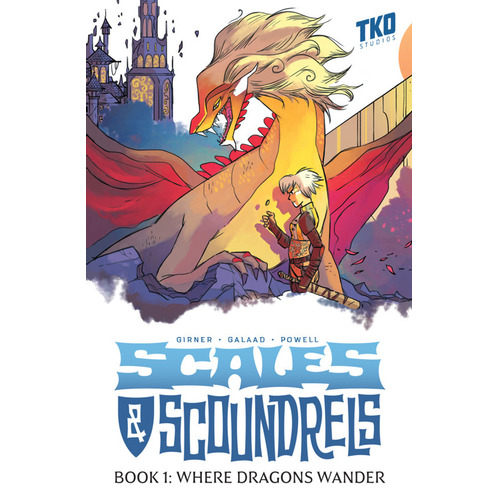

Join Gene and Willow on a tour of graphic novels during the Year of Sword and Sorcery (TM). Rakish dragons, monstrous princesses, disembodied witches, and weird leg monsters abound in this exciting podcast! (Discalimer, the podcast is only as exciting as two nerds talking about books ever is.)
bookstabber.podbean.com
Books discussed:
Head Lopper Volume 1: The Island or a Plague of Beasts (2016)
Scales and Scoundrels Book 1 (Definitive Edition) (2021)
Darkly She Goes (2023)
Mirenda by Grim Wilkins (2018)
15 notes
·
View notes
Text

2022 comics reading log
In the early days of last year, I was inspired by some twitter mutuals to post my comics reading in the new year and kept it up from Jan 1 2022 till just about the bitter end. Something about it really helped keep me invigorated by the medium even in some pretty bleak times, so I’m going to keep it going this year, but here at Longboxd instead of on twitter, which I'm trying to spend less time at. Before I can do that though, I want to archive the 2022 entries in a spot that’s more permanent/less twitter-iffic, so here we go—pretty much every comic I read in 2022! (As transcribed from here)
Part 2: 22-38 (of 387)
(I can "only" post 30 images at a time here, so that’ll dictate the length of these catch-up posts)


22) Silver Star #1 by Jack Kirby & Mike Royer - Kirby’s Blubber? Very Beto vibes—very Lynchian, held together by spit and nonsense.
23) Shattered Earth #1 - The best story in this anthology has a horny dog that gets cucked by a wandering wasteland hippie.


24) Sun Runners #2
25) Shade, The Changing Man #50


26) True Lives Of The Fabulous Killjoys: NATIONAL ANTHEM - Narratively, it’s firmly in the "halcyon days of vertigo" mold, and that’s cool, but between Romero and Bellaire this is one of the more stunning art showcases I’ve seen in a while. God-tier coloring, IMO!

27) The Terminator #1 (1990) - Chris Warner tha gawd with nice chunky inks from Paul Guinan, and a script by DH genre MVP John Arcudi that swings between terse and pleasantly purple. This and the Predator series the year before (also drawn by Warner) set the mold for decades of movie tie-in books.
28 & 29) Blood n’ Guts #1 & 2 - These are very bad comics by a weird, probably bad dude who's weird & not always bad comics I grew up with. Not much to them (this is from one of Blair's big firehose-of-comics periods) other than a *great* logo I assume was made by Dave Cooper.


30) Alien Worlds #7 - I loved this series as a kid—it's mostly an art showcase (Corben, Morrow, Anderson & Perez in this issue!) but Bruce Jones' short stories are trashy scifi paperback anthology style fun, routinely see-sawing btwn kind of hokey & total bleak nihilism, often on the same page. one story, theoretically concerned w/recreating The Thing inside an implied sketch of a Wally Wood/EC planet setting, mostly actually focuses on infidelity leading to murder (a common Jones trope). In the end everyone dies after the revelation that their parkas are hungry aliens.


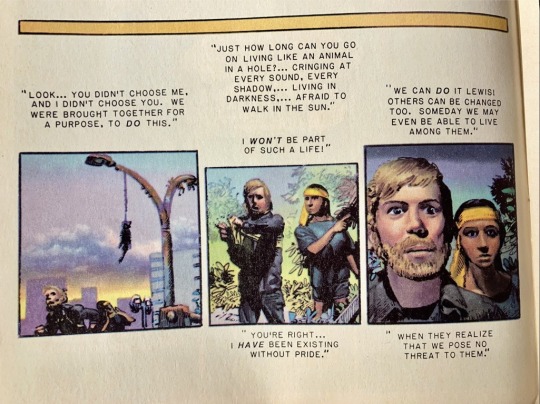



31) Eclipse Monthly #2 by various
32) Sensation Comics #6 - This is the pure, uncut shit.
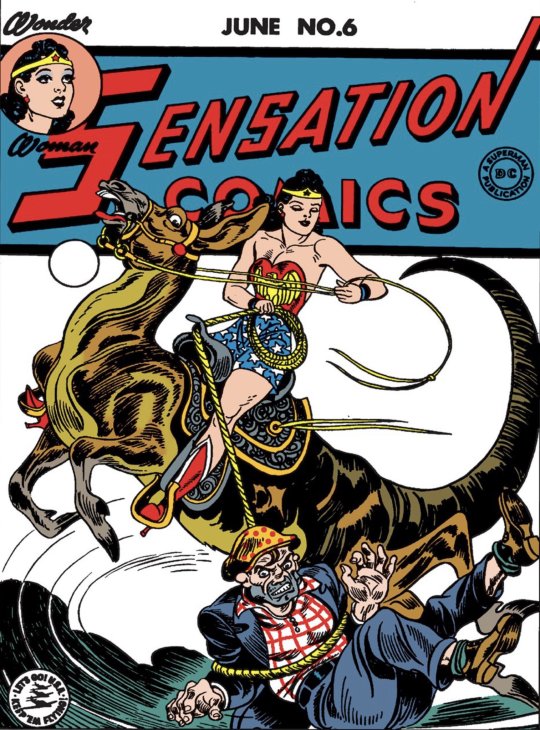


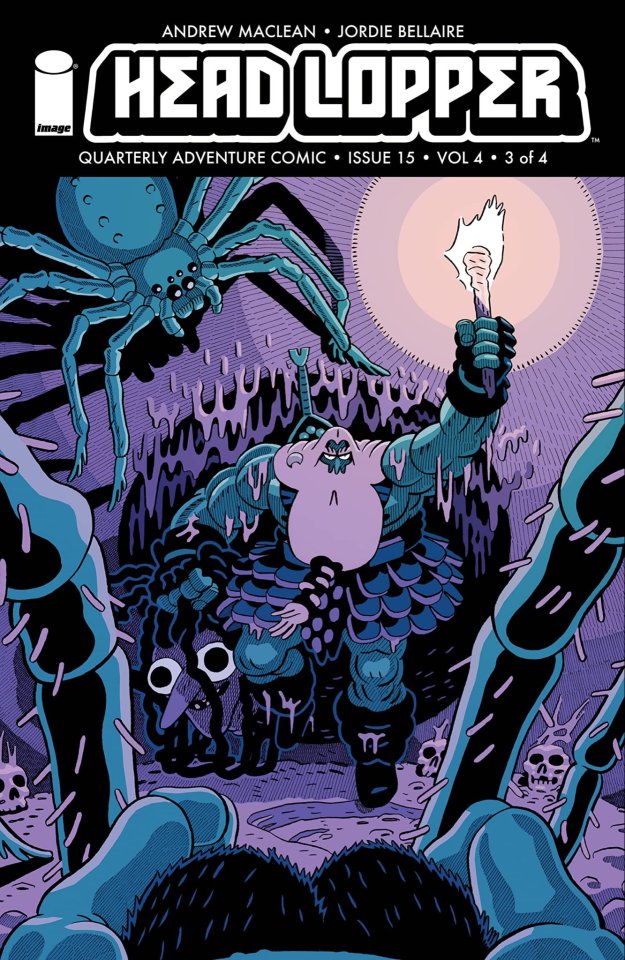
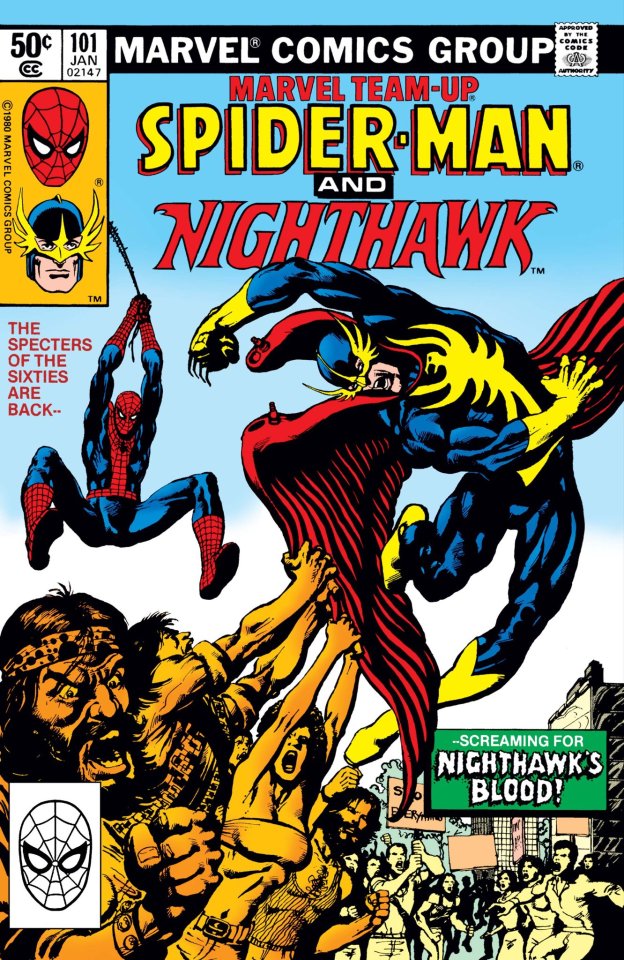

33) Head Lopper #15
34) Marvel Team-Up #101 - Robot hippies and Peter Parker favorably compares the trauma of Nighthawk killing his girlfriend in a drunk driving incident to Uncle Ben’s death.
35) The Swamp Thing: Becoming TPB
36) Head Lopper #16
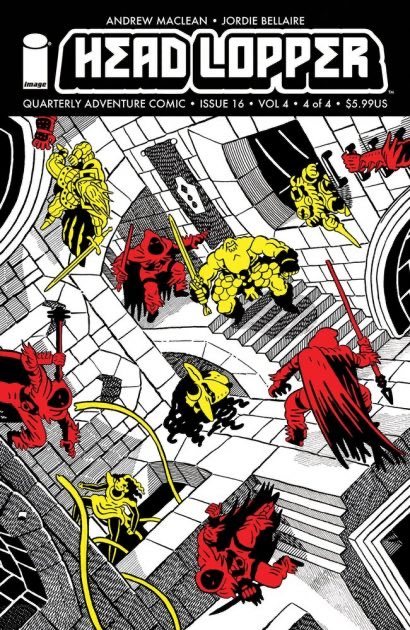



37) Skull, The Slayer #1 - Sorta standard Th’unda etc white adventure guy thrown into a prehistoric setting to fight dinosaurs kinda thing, (the twist being that this guy? He’s a real piece of shit!) but Steve Gan does impressive work, and Marv Wolfman’s colors are surprisingly effective.


38) The Man-Thing #8 - I haven’t read many of these. Pacing is slow if not deliberate, vampy gothic vibes. With Ploog’s squishy art, it kinda reads like a Golden Age Underground.

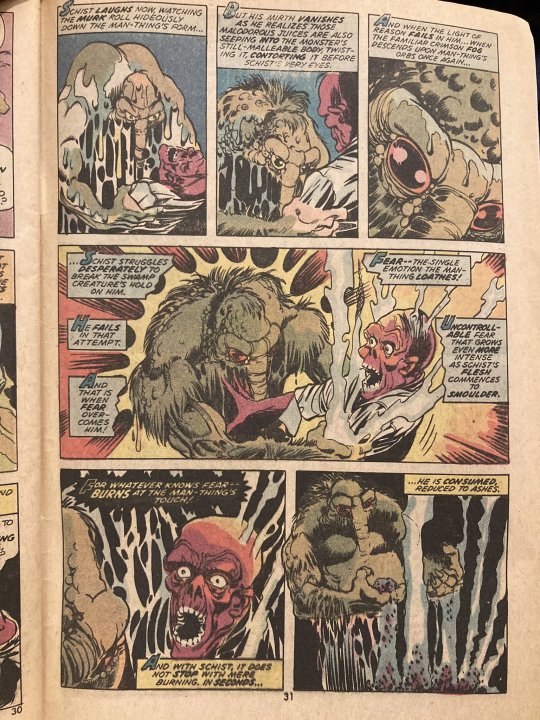
_______
To be continued! Read Part 1 here
7 notes
·
View notes